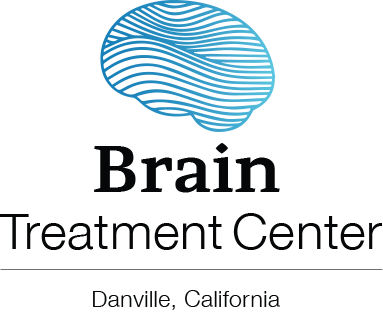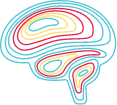
Stroke Recovery
A stroke can be frightening. Depending on the severity, stroke recovery can be a long, frustrating, and often disheartening experience. We understand and we know how important it is to do everything possible to help your brain heal and recover.
Types of Stroke and How They Affect the Brain and Body
Many types of stroke exist, each with its own after-effects. These include:
- TIA (Transient Ischemic Stroke): Also referred to as a mini-stroke, where a temporary clot blocks blood flow to the brain. While a TIA doesn’t cause permanent damage, it may signal a future stroke which can be far more serious and damaging.
- Ischemic Stroke: The most common type of stroke — affecting 87% of patients — occurs when a clot obstructs a blood vessel and prevents oxygen from reaching the affected part of the brain.
- Hemorrhagic Stroke: This stroke is also called a “brain bleed” and occurs when blood vessels within the brain rupture and bleed into the surrounding tissues. The most common hemorrhagic stroke is an aneurysm (when a blood vessel bursts) caused by uncontrolled high blood pressure.
Other strokes include a Cryptogenic Stroke, where the cause is unknown, and a Brain Stem Stroke, which occurs in the brain’s stem instead of the brain itself. Each of these can be damaging and sometimes fatal.
Stroke After-Effects
A stroke can affect different areas of the body, depending on where it occurs in the brain. For example, if a stroke occurs on the left side of the brain, it affects the right side of the body and vice versa. The amount of damage caused by the stroke will determine the amount of rehabilitation needed, as well as how much permanent disability occurs.
After-effects can include:
- Paralysis on the right or left side of the body
- Speech/language problems
- Vision problems
- Memory loss
Because the brain controls every function in the human body, a stroke can affect many areas, some of them permanently. And the time for recovery can take anywhere from weeks to years, depending on the stroke’s severity. However, therapy and rehabilitation can greatly help in recovery from stroke after-effects.
How MeRT Can Help with Stroke Recovery
When a person has a stroke, some brain cells are damaged, and some die. Following a stroke, the brain gets to work on recovering by repairing the cells that were damaged but didn’t die. At the same time, the brain cleans up and removes the dead brain cells. Once this repair and cleanup are completed, the brain works to restructure the damaged area by changing the connections in the brain. This is called neuroplasticity, also known as neural plasticity or brain plasticity.
This amazing ability of the brain to change and adapt is why MeRT treatment can be so helpful in stroke recovery. MeRT can help your brain do what it naturally wants to do, generating new pathways around the damaged area. In essence, MeRT can help your brain to heal itself.
MeRT is a cutting-edge treatment protocol that combines technologies of transcranial magnetic stimulation (TMS, an FDA-cleared therapy), quantitative electroencephalogram (qEEG), and electrocardiogram (ECG/EKG) to analyze and formulate treatments tailored for each person’s unique brain pattern. And MeRT is a highly effective and well-tolerated treatment for the after-effects of a stroke.
MeRT
Here at Brain Treatment Center in Danville, we offer MeRT for Stroke Recovery. This is a unique version of TMS (Transcranial Magnetic Stimulation), with a far more individualized approach to brain modulation. We tailor treatment to the patient’s needs based on frequency, location, and magnetic power used. TMS modulates the brain’s electrical activity by using magnetic fields which pass through the scalp from an electromagnetic coil. This process is non-invasive and painless. Research studies show that this type of treatment is promising for Stroke Recovery.
Most TMS treatments deliver stimulation to one area of the brain at a fixed frequency for all patients. MeRT, however, is more evolved. We carefully analyze a patient’s initial testing as to the brain’s pattern of function and activity. We then use this information to devise a highly personalized protocol for each patient, with the purpose of encouraging improved brain communication. Patients have indicated that they have experienced significant clinical improvements.*
Treatment for Stroke Recovery patients usually lasts four to eight weeks, but can be ongoing. Appointments are 30 to 45 minutes long, Monday through Friday. Generally, the patient will begin to notice improvements during the first week.
While the FDA has cleared the equipment used for MeRT in the treatment of depression that has been resistant to medications, it may also be used off-label for other disorders in the practice of medicine.
Studies have shown altered brain wave oscillations in patients suffering from conditions such as Major Depressive Disorder (MDD), Autism, Traumatic Brain Injury (TBI), Post-Traumatic Stress Disorder (PTSD), Anxiety, and more. MeRT treatment protocol uses a magnetic field to balance and stimulate brain function. The technology involves using sophisticated diagnostics and imaging to customize the treatment for each individual. We then tailor a personalized protocol based on the location, frequency, and amount of power used by the magnet, specific to each person’s unique condition. As a result, MeRT can improve brain communication and synchronization and can lead to significant and long-lasting improvements.
Much of the initial MeRT research has been done by the U.S. Department of Defense for veterans returning from combat. There is an article that was published in Defense One that further explains the DOD’s research and the benefits that MeRT has been shown to have on people suffering from TBI, PTSD, and MDD. Additional studies have been completed in the private sector on other conditions.
MeRT Treatment for Stroke Recovery: What to Expect
For the initial analysis, you will come in for a comprehensive testing appointment. We will gather your new patient paperwork and then our neuro technician will perform a qEEG and EKG, which will enable us to identify any dysfunction or communication problems in your brain.
This appointment usually takes about 45 minutes. Should you decide to proceed with treatment, we will schedule your assessment period. Your second appointment is also 45 minutes long. During this time, you will meet with a provider for a clinical evaluation. The provider will answer any questions you may have and discuss your applicable treatment plan.
Assessment Period
The assessment period of treatment lasts for two weeks, and will help you, and us, determine how you are responding to treatment. At the end of the assessment period, we will perform a second qEEG to note any changes occurring in your brain.
The first week will be Monday through Friday, and the second week, Monday through Thursday, nine sessions in total, followed by a repeat qEEG to determine progress.
Continuing Treatment
Once the assessment period is complete, and we are seeing progress both clinically and on the qEEG, we will schedule subsequent two-week treatment periods.
The comparison between the initial and second qEEG/clinical evaluation will determine if you are responding. You should also start to experience changes in the way you are feeling during this time. We highly advise a total of six weeks of treatment (which includes the assessment period) for optimal and long-lasting results.
Since each brain is unique, the protocol will be different for each patient as it is based on specific qEEG/EKG data from your brain, and the specific condition being treated. Generally, the results of treatment can last a lifetime, though some people prefer occasional follow-up treatment as needed. But each person is different, and protocols may vary. Your provider will have regularly scheduled follow-up EEGs and meet with you to gauge your progress.
Additional Information
A typical treatment session takes about 45 minutes. You will sit in a chair while the neuro technician administers the treatment near the scalp via a magnetic coil. The gentle magnetic impulses are delivered for six to eight seconds each minute. You may feel a slight sensation while the treatment is occurring, but it is not painful or uncomfortable.
Please note that results and improvements are based on active and strict observation of our regimens. Results may vary based on the individual users and are not guaranteed. Additionally, the results of therapy can vary per individual. In general, the longer the length of MeRT therapy, the longer the changes remain.


